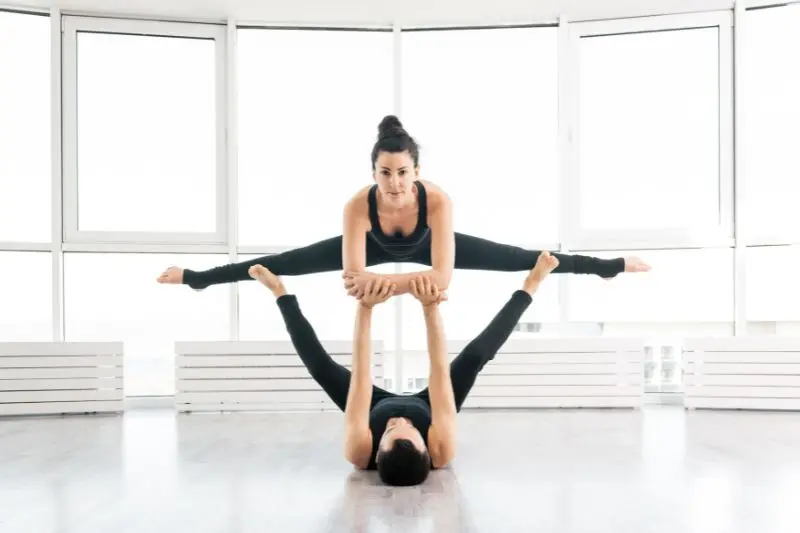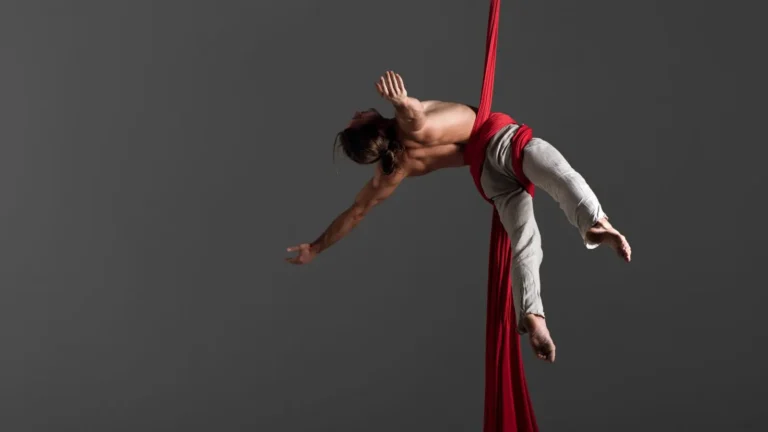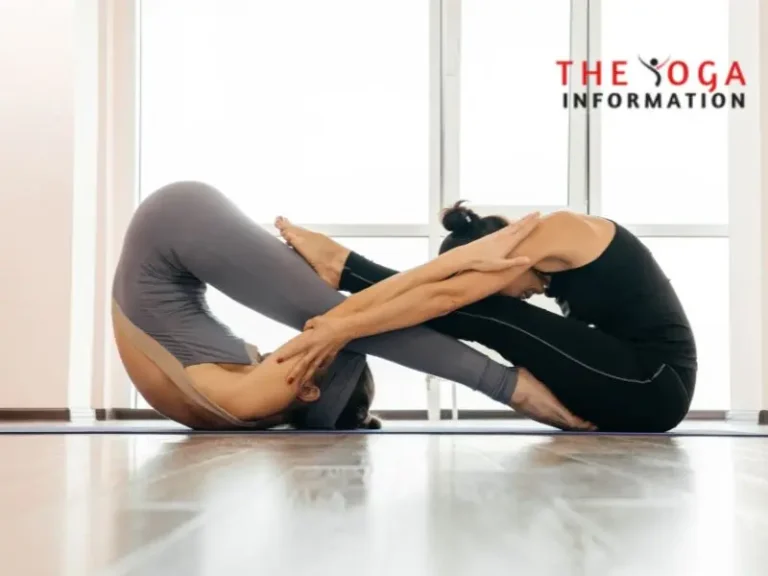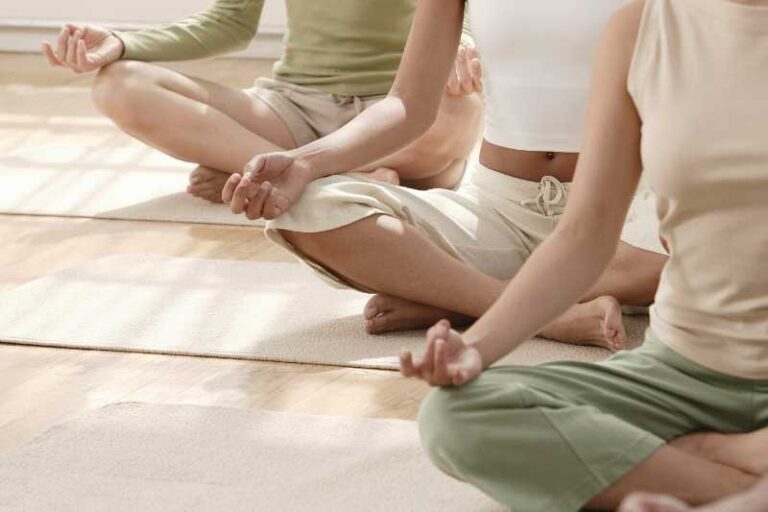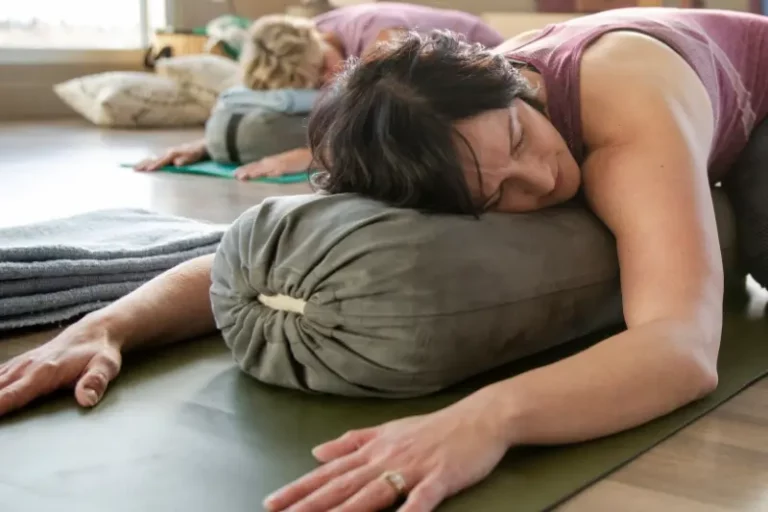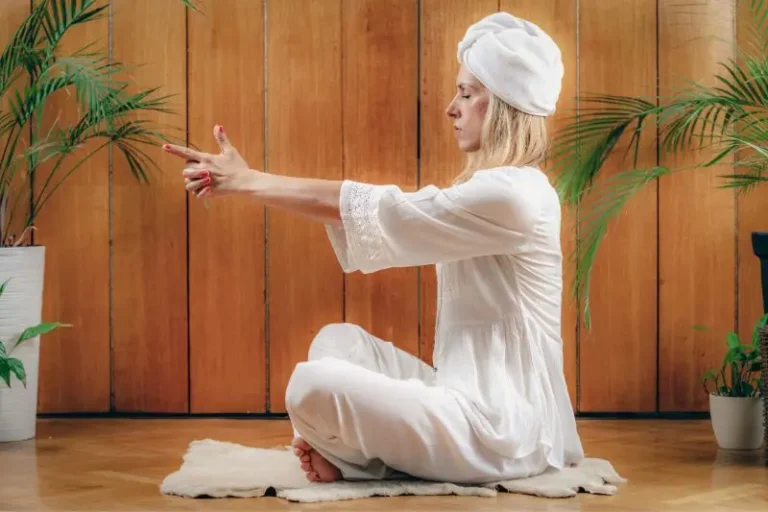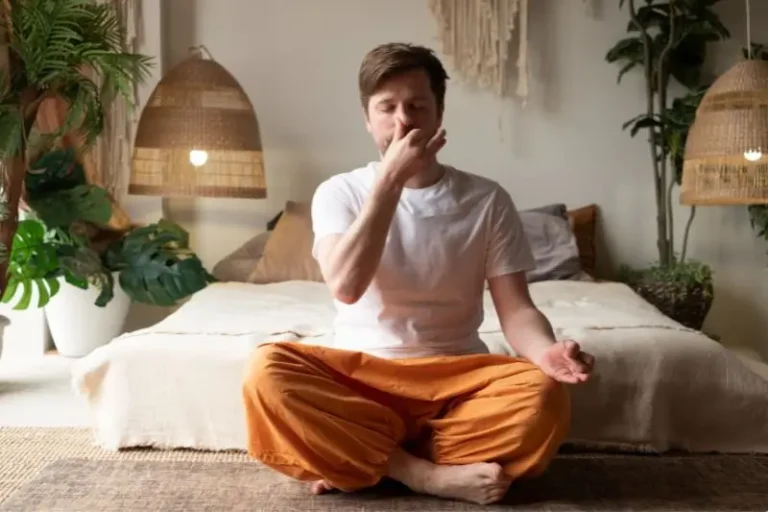Introduction
Acro Yoga is a form of partner yoga that combines traditional yoga poses with acrobatic movements. It involves two or more people working together to create a sequence of poses and movements that require balance, strength, and trust. The practice incorporates elements of yoga, acrobatics, and Thai massage, making it a holistic and multi-dimensional approach to health and wellness.
What is Acro Yoga
Acro yoga is a partner-based practice that combines acrobatic movements with yoga. It involves two or more people working together to create different poses and sequences. One person acts as the “base,” providing a stable foundation, while the other person acts as the “flyer,” performing various poses on top of the base. It also includes elements of Thai massage, which helps to release tension and increase flexibility. It’s a fun and challenging way to work on strength, balance, and communication skills with a partner.
Benefits of Acro Yoga
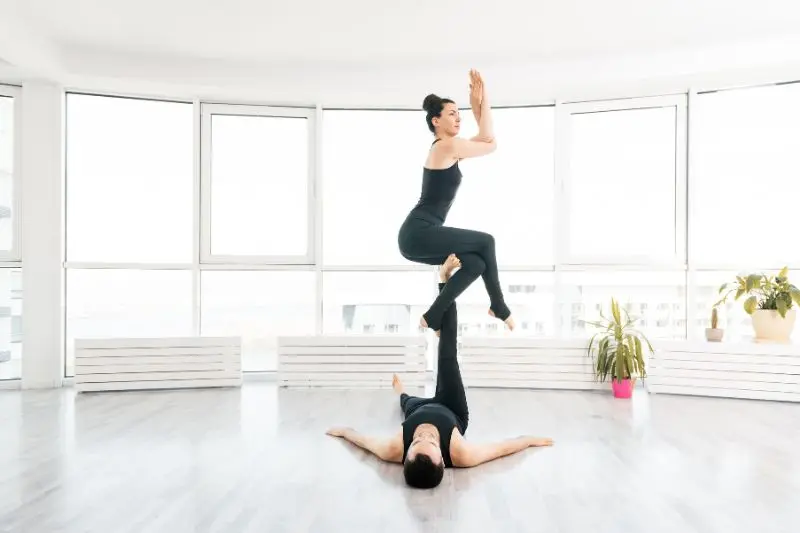
Acro Yoga is a unique form of yoga that offers numerous physical and mental benefits.
Physical Benefits of Acro Yoga
Strengthens Muscles: Acro Yoga involves lifting and supporting your partner’s weight, which requires a great deal of strength. It helps to strengthen your core, arms, shoulders, legs, and back muscles.
Improves Flexibility: Acro Yoga involves a lot of stretching, which helps to improve your flexibility. This helps to reduce the risk of injuries and improves your range of motion.
Enhances Balance: Acro Yoga requires a lot of balance and coordination. Practicing this form of yoga helps to improve your balance and stability.
Boosts Cardiovascular Health: Acro Yoga involves a lot of movement and physical activity, which helps to improve your cardiovascular health. It helps to lower your blood pressure, reduce the risk of heart disease, and improve your overall fitness level.
Improves Digestion: The twisting and stretching movements in Acro Yoga help to stimulate your digestive system, which can improve your digestion and relieve constipation.
Mental Benefits of Acro Yoga
Builds Trust: Acro Yoga involves a lot of trust between partners. This helps to build trust and improve communication skills.
Reduces Stress: Practicing Acro Yoga can help to reduce stress and anxiety. The focus on breath and movement helps to calm the mind and improve mental clarity.
Builds Confidence: Acro Yoga can help to build confidence and self-esteem. Achieving new poses and movements can be a great confidence booster.
Improves Communication: Acro Yoga requires a lot of communication between partners. This helps to improve communication skills and can be beneficial in other areas of life.
Increases Happiness: Acro Yoga can be a fun and joyful experience. The sense of accomplishment and satisfaction after achieving a new pose can increase happiness and overall well-being.
Precautions Practicing Acro Yoga
Acro Yoga can be a fun and rewarding fitness practice when performed safely and responsibly. By following these precautions, you can ensure a safe and enjoyable experience while building strength, flexibility, and trust with your partner.
Warm-up and Stretch
Before attempting any Acro Yoga poses, it is important to warm up and stretch your muscles. Start with some basic yoga poses to warm up your body and increase your flexibility. Then, spend some time stretching your legs, arms, and back to prepare your body for the physical demands of Acro Yoga.
Find a Qualified Instructor
Acro Yoga requires skill and experience to perform safely. It is important to find a qualified instructor who can teach you the proper techniques and safety measures. Look for instructors who are certified and experienced in Acro Yoga to ensure a safe and enjoyable experience.
Communicate with Your Partner
Clear communication is essential when practicing. Before attempting any pose, discuss with your partner what you plan to do and how you will do it. Establish clear signals to indicate when you need to stop or adjust the pose. Always listen to your partner and communicate any discomfort or pain immediately.
Start with Basic Poses
If you are new to start with basic poses and gradually work your way up to more advanced poses. Do not attempt advanced poses without proper instruction and experience. Focus on developing good technique and building strength and flexibility before attempting more challenging poses.
Use Spotters
When attempting more challenging poses, it is important to have spotters to assist you. Spotters can help you maintain balance, prevent falls, and provide support if you lose your balance. Always use spotters when attempting advanced poses.
Avoid Overexertion
Acro Yoga can be physically demanding, and it is important to listen to your body and avoid overexertion. Do not push yourself too hard and take breaks when needed. If you are feeling fatigued or experiencing pain or discomfort, stop practicing immediately.
Techniques for Practicing Acro Yoga
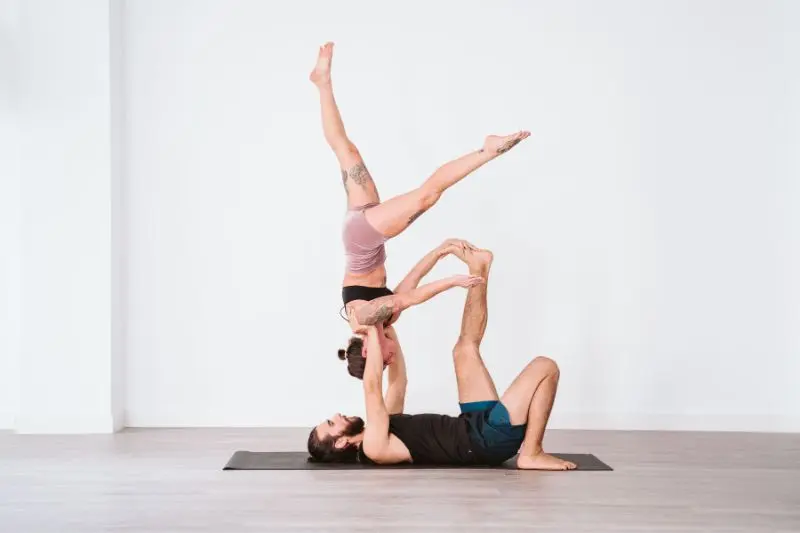
It is an exciting and challenging practice that requires proper technique and training to prevent injury. By incorporating warm-up techniques, mastering basic, intermediate, and advanced poses, and practicing with a partner, you can safely and successfully enjoy the benefits of Acro Yoga.
Warm-Up Techniques
Sun salutations: This classic yoga sequence is an excellent way to warm up your entire body. It involves a series of poses that flow together, including forward folds, downward facing dog, plank, and upward facing dog.
Handstand prep: Handstands are a fundamental part of Acro Yoga, and warming up your wrists, shoulders, and core is important. Try some wrist circles, shoulder rolls, and core-strengthening exercises to prepare your body for handstands.
Partner stretches: Partner stretches are an excellent way to warm up and build trust with your partner. Try seated forward folds while facing each other, or gentle twists while holding hands.
Basic Acro Yoga Techniques
Once you’ve warmed up, it’s time to start practicing some basic Acro Yoga techniques. These moves are perfect for beginners and will help you build a strong foundation for more advanced poses. Here are a few to get you started.
Bird: Bird pose is one of the most recognizable Acro Yoga poses. It involves the base lying on their back with their knees bent and feet flat on the ground. The flyer then places their feet on the base’s shins and leans forward, extending their arms out in front of them.
Throne: Throne pose is another popular Acro Yoga pose, and it’s a great introduction to lifts. The base sits on the ground with their knees bent, and the flyer sits on their feet facing away from them. The flyer then places their hands on the base’s knees and leans back, extending their legs out in front of them.
Shoulder stand: Shoulder stand is a classic yoga pose that can be adapted for Acro Yoga. The base lies on their back with their feet flat on the ground and knees bent. The flyer then places their feet on the base’s hips and leans back, extending their legs up towards the ceiling.
Intermediate Acro Yoga Techniques
Once you’ve mastered the basic Acro Yoga techniques, it’s time to move on to more advanced poses. These require more strength, balance, and coordination, but are still achievable with practice. Here are a few intermediate It poses to try:
Star: Star pose is a fun and challenging Acro Yoga pose that requires good balance and trust between partners. The base lies on their back with their arms and legs extended. The flyer then places their hands and feet on the base’s hands and feet, respectively, creating a star shape.
Reverse bird: Reverse bird is a more advanced version of bird pose that requires greater strength and flexibility. The base lies on their back with their knees bent and feet flat on the ground. The flyer then places their hands on the base’s shins and lifts their legs up towards the ceiling, creating a reverse bird shape.
Straddle bat: Straddle bat is a challenging Acro Yoga pose that requires good core strength and balance. The base lies on their back with their legs extended, and the flyer sits on their feet facing them. The flyer then leans back, extending their legs out in front of them and placing their hands on the base’s ankles.
Advanced Acro Yoga Techniques
For those who are ready for a greater challenge, there are plenty of advanced Acro Yoga techniques to try. These moves require a great deal of strength, balance, and coordination, so be sure to practice with caution and with a partner you trust. Here are a few examples.
Foot-to-hand: Foot-to-hand is an advanced Acro Yoga pose that requires excellent balance and strength. The base stands with their feet about hip-width apart and hands at their sides. The flyer then stands on one foot, placing their other foot on the base’s hand, and extends their arms out to the sides.
Hand-to-hand: Hand-to-hand is perhaps the most challenging Acro Yoga pose of all. The base stands with their arms extended above their head, and the flyer stands on their hands, with their feet resting on the base’s hands. This pose requires incredible strength, balance, and trust between partners.
High-flying whale: High-flying whale is a fun and challenging Acro Yoga pose that requires good coordination and balance. The base lies on their back with their legs extended, and the flyer sits on their feet facing away from them.
Tips for Acro Yoga
It can be a fun and rewarding practice that challenges you both physically and mentally. By following these tips and practicing regularly with a trusted partner, you can improve your skills, build your confidence, and deepen your connection with yourself and others.
Find a partner you trust
Acro Yoga requires a partner, so it’s important to find someone you trust. Look for someone who is willing to communicate openly, listen to your needs, and work with you as a team. Before you start practicing, take some time to get to know your partner and build a sense of mutual trust.
Start with the basics
Acro Yoga can be challenging, so it’s important to start with the basics and build up your skills gradually. Begin with simple poses like the bird, the throne, or the plank, and work on your alignment, balance, and communication skills. Once you feel confident with the basics, you can start exploring more advanced poses and transitions.
Focus on communication
Communication is key in Acro Yoga. You need to be able to talk to your partner and give clear instructions, as well as listen to their needs and feedback. Practice active listening, ask for consent before trying new poses, and be open to giving and receiving constructive feedback.
Build strength and flexibility
Acro Yoga requires strength, flexibility, and endurance. To improve your skills, focus on building strength and flexibility in your core, arms, shoulders, and legs. Incorporate yoga, calisthenics, and strength training exercises into your routine, and work on improving your balance and coordination.
Always warm up and cool down
As with any physical activity, it’s important to warm up and cool down properly to prevent injury and improve performance. Before you start practicing Acro Yoga, spend some time warming up your muscles and joints with gentle stretches and mobility exercises. After your practice, cool down with some restorative yoga poses or self-massage.
